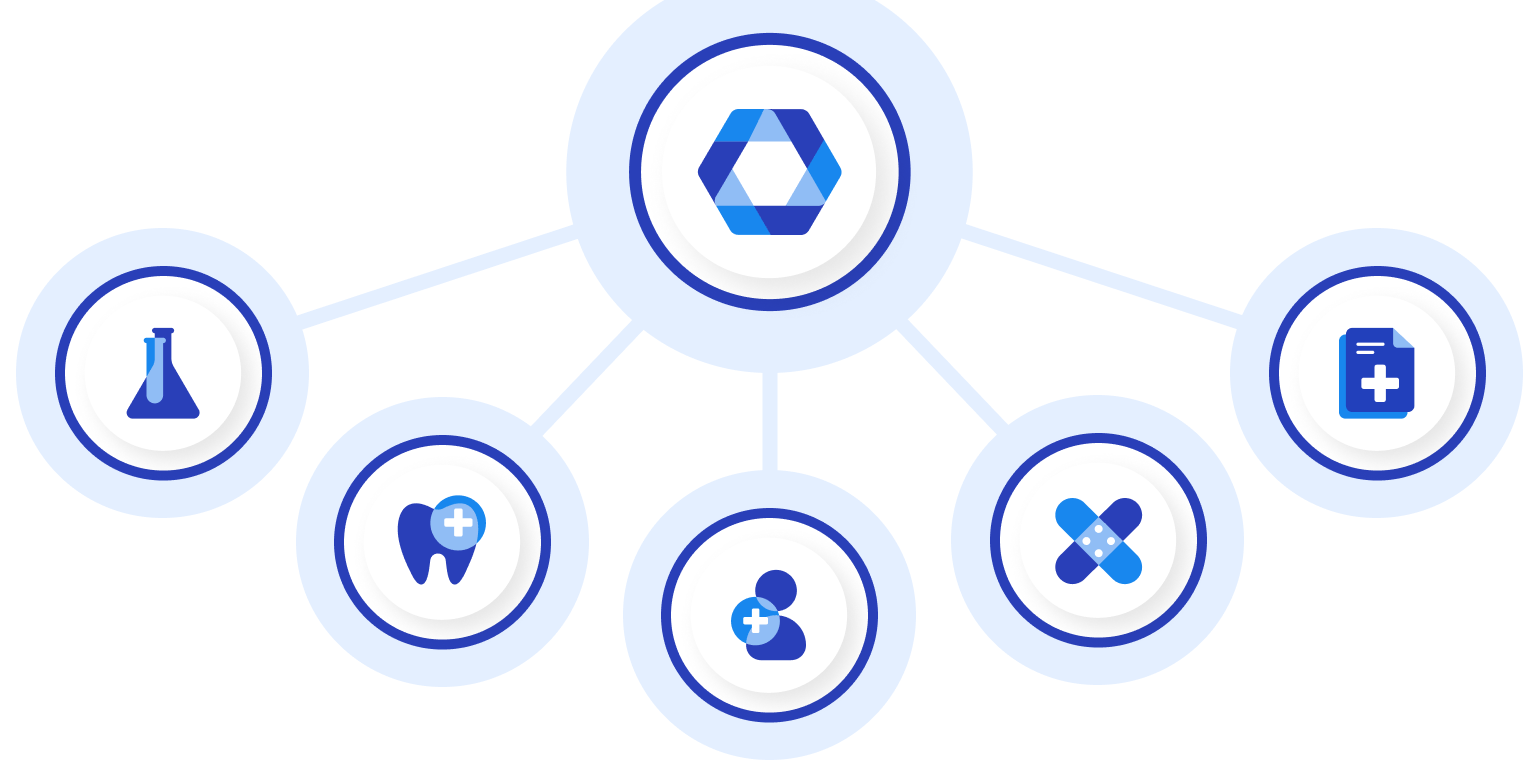AI in Dentistry: Today’s Landscape and the Future
Just like many other fields, dentistry is also benefiting from the rapid technological advancements. Artificial intelligence (AI), a significant result of this digital revolution, is gradually being used in several aspects of dental care. With the potential to transform everything, from diagnosis to patient management, it’s shaping the future of dental practices.
This article will explore what AI is, its growing role in various dental specialties, the challenges it poses, and the promising future it holds within the dentistry sector.
Understanding Artificial Intelligence in Dentistry
In the age of smart technology, the field of dentistry hasn’t been left untouched. AI, once a concept restricted to science fiction, is now a reality changing several aspects of dental care. Whether it’s enhancing diagnostic accuracy, streamlining administrative tasks, or personalizing patient care, AI can significantly elevate dental practice.
What Is Artificial Intelligence?
Artificial intelligence is an expansive branch of computer science focused on building intelligent machines that can perform tasks typically done by humans.
Tracing its roots back to the mid-20th century, AI has undergone significant improvements, especially in the last decades. Steered by high computational power and abundant data, it has evolved from being just a concept in science fiction to an everyday reality.
AI is classified into narrow AI and general AI. Narrow AI is adept at handling specific tasks such as voice recognition. General AI, on the other hand, is a type of machine intelligence that can theoretically do any task just like a human. Most of the AI we encounter every day, such as voice assistants, is narrow AI.
In healthcare, AI has been nothing short of transformative. It’s extensively used for various purposes, from predictive diagnostics and personalized medicine to patient monitoring and drug discovery. AI-powered robots are assisting with surgeries, and machine learning is being used to predict patient health outcomes.
The use of AI is increasing across all sectors of healthcare, including dentistry, as they’re starting to see the benefits of this smart technology.
The Advent of AI in Dentistry
The fusion of dentistry and AI stems from a shared goal – improving healthcare delivery to promote better patient outcomes. This integration was driven by technological advancements, the growing need to manage large amounts of data, and the demand for precision in diagnostics and treatments.
Today, dentistry is entering a new era where AI isn’t just an add-on but an integral part of the system, driving efficiency and effectiveness in dental care.
AI, with its ability to process and understand large volumes of data accurately, has introduced a more data-driven approach in dentistry. It helps in various complex processes, such as interpreting radiographic images, scheduling patient appointments, and creating treatment plans.
By reducing human error and saving time, AI enhances the overall quality of patient care, leading to improved patient satisfaction and outcomes.
The future of AI in dentistry looks promising. As technology continues to advance, we can expect AI to do more than just aid in diagnostics and administrative tasks. We’re looking into more innovative applications of AI, such as AI dental robots, predictive analytics for personalized patient care, and AI-assisted research for a better understanding of oral diseases and treatments.
Although we’re only starting to see the potential of AI in dentistry, the future promises exciting possibilities that could transform the field.
Current Applications of AI in Dentistry
It’s not an exaggeration to say that AI has ushered in a new era in various dental specialties by using techniques like machine learning and deep learning.
AI in Radiology
Radiology, an essential aspect of dental diagnostics, is undergoing a significant transformation with the adoption of AI. This innovative technology, with its remarkable data processing and learning capabilities, enhances image interpretation, diagnosis, and treatment planning in dentistry.
Image Interpretation
AI has proven to be a powerful tool in interpreting dental images. It can automatically interpret dental X-rays and 3D scans with a high degree of accuracy.
Thanks to its advanced machine learning algorithms, AI can even recognize various oral disorders and provide a comprehensive overview of a patient’s oral health. This reduces the workload of dental professionals and speeds up diagnosis, contributing to timely and effective treatment.
Diagnosis
AI’s role doesn’t stop at interpreting images. In fact, one of its most beneficial applications is its diagnostic capability. AI can analyze X-ray images, detect patterns that may be invisible to the naked eye, and suggest diagnoses. This not only improves diagnostic accuracy but also reduces the likelihood of human error, leading to improved patient outcomes.
Treatment Planning
Beyond diagnosis, AI also aids in treatment planning in dental radiology. Using radiographic images and clinical data, AI can predict potential treatment outcomes. This helps dentists to create effective treatments tailored to the patient’s specific needs.
It’s a huge step toward precision dentistry, ensuring each patient receives the most suitable treatment for their condition.
AI in Orthodontics
Orthodontics, the branch of dentistry that corrects teeth and jaw alignment, is another area where AI’s impact is greatly felt. From treatment planning to patient management, it’s making orthodontics more efficient, accurate, and personalized.
Treatment Planning Assistance
AI assists in creating comprehensive orthodontic treatment plans by using its predictive ability. It can accurately predict teeth movement, which is vital in deciding the orthodontic treatment.
Additionally, AI can determine the most effective orthodontic appliances for each patient. This not only enhances the accuracy of treatment plans but also helps achieve better treatment outcomes.
Patient Management
Managing patients effectively is a critical aspect of any dental specialty, including orthodontics. AI can automate several administrative tasks related to patient management, such as scheduling appointments, following up with patients, and sending timely reminders about treatment schedules.
This ensures seamless patient management and allows orthodontists to focus more on patient care than administrative tasks.
AI in Periodontics
AI is making a strong impact in the field of periodontics, the dental specialty concerned with preventing, diagnosing, and treating periodontal disease.
Periodontal Diseases Diagnostics
Periodontal diseases, if not diagnosed early, can lead to serious oral health problems. AI improves diagnostic accuracy by analyzing dental images and patient symptoms to make precise diagnoses. This helps spot periodontal diseases in their early stages, allowing for timely and effective treatment and preventing the disease from worsening.
Periodontal Diseases Management
Effectively managing periodontal diseases is crucial to maintaining good oral health. AI, with its ability to handle big data, can suggest various treatment options tailored to each patient’s needs. Whether it’s recommending non-surgical treatments or specific medications, AI’s role in periodontal disease management is pivotal.
AI in Endodontics
AI has great potential in endodontics, a specialty that deals with the tooth pulp and tissues surrounding the root of a tooth.
Endodontic Diagnosis Assistance
A misdiagnosis in endodontics can lead to treatment failure or complications. AI’s ability to process and analyze complex clinical data proves to be of great help in this aspect. It can identify subtle patterns that could otherwise be missed, which helps plan the right treatment.
Treatment Planning
AI’s contribution extends to endodontic treatment planning. It can analyze patient data and previous cases to help make effective treatment plans. This ensures each patient receives the most suitable treatment for their condition.
Outcome Prediction
Outcome prediction is another area where AI proves to be extremely beneficial in endodontics. AI can predict treatment outcomes for endodontic conditions. This ability helps dentists and patients make informed decisions about treatment, ensuring they know what to expect from the chosen treatment.
AI in Oral Pathology
Oral pathology concerns the identification and management of diseases affecting the oral and maxillofacial regions. In this critical aspect of dental care, AI brings unprecedented precision and efficiency.
Detection of Oral Diseases
AI can assist in detecting oral diseases. For conditions such as oral cancer or HIV-related oral lesions, early detection can significantly alter the treatment course and prognosis. AI streamlines this process by analyzing dental images and patient symptoms, enabling faster and more accurate detection.
Diagnosis of Oral Diseases
Diagnosing oral diseases can be complex, as it requires interpreting several signs and symptoms. AI helps in this process using advanced machine learning algorithms. By analyzing patient data, it can suggest potential diagnoses with a high degree of accuracy, leading to more targeted treatment approaches.
Challenges and Limitations of AI in Dentistry
Just like any other technology, AI in dentistry has its challenges and limitations. From data quality to ethical and legal issues, these hurdles need to be addressed to harness the full potential of AI.
Need for Quality Training Data
AI systems learn and improve based on the data they’ve given. Hence, the quality and variety of the data used to train AI systems are crucial for their performance. For AI to accurately diagnose and predict dental conditions, it needs to be trained using comprehensive datasets of various oral conditions.
However, obtaining such data, especially in a format AI can use, is a significant challenge. This often limits the scalability of AI applications in dentistry and affects the accuracy of AI outputs.
Ethical and Legal Considerations
Using AI in healthcare requires careful attention to ethical and legal considerations. Protecting patient privacy is of utmost importance, especially when handling sensitive health data. Legal issues can also arise, especially regarding liability, if an AI system makes an error that leads to patient harm.
In addition, informed consent, a central principle in medical ethics, becomes tricky with AI systems.
How much does a patient need to know about an AI system used in their care? Who is responsible when an AI treatment goes wrong? These questions highlight the ethical issues of implementing AI in healthcare, including dentistry.
Despite these challenges, it’s clear that AI can have a big impact on dentistry. It’s up to researchers, policymakers, and dental professionals to address these challenges as we continue to integrate AI into dentistry.
By developing ethical guidelines, improving data collection and quality, and understanding the legal implications, we can use AI responsibly and effectively in dentistry.
The Future of AI in Dentistry
Despite the challenges, the advantages AI brings to dentistry are substantial.
The future of AI in dentistry is an exciting prospect, filled with promising developments and potential breakthroughs. The way AI is currently transforming dental practices shows its huge potential, from advances in CAD/CAM dentistry to predicted innovations and trends in the industry.
AI in CAD/CAM Dentistry
Computer-aided design/computer-aided manufacturing (CAD/CAM) has already revolutionized restorative dentistry, and integrating AI into CAD/CAM could improve it even more.
AI could potentially enhance the design and manufacturing processes, leading to better precision, customization, and efficiency. This could result in superior dental restorations, improving both their look and functionality.
Predicted Innovations and Trends
As we look ahead, AI’s influence in dentistry is expected to grow, leading to many exciting innovations and trends. Let’s look into some predicted advancements in detail.
AI-Powered Dental Robots
One of the much-anticipated advancements is the emergence of AI-powered dental robots. These robots could perform various routine procedures, such as cleaning and polishing, with increased precision and efficiency, minimizing human error.
Future possibilities include complex tasks like tooth extractions, paving the way for a new era of robotic dentistry.
Predictive Analytics in Patient Care
Predictive analytics, another potential breakthrough fueled by AI, is expected to change patient care delivery. By using past data to predict future outcomes, dentists could foresee the probability of a patient developing certain dental issues, such as gum disease or tooth decay, allowing for preventive measures.
AI-Empowered Dental Research
AI is also anticipated to substantially influence dental research, speeding up our understanding of oral diseases and treatment efficacy. By analyzing extensive datasets of dental cases, AI could identify patterns and correlations that might be challenging for humans to detect. This could lead to the development of more effective treatments.
Enhanced Patient Interaction
Lastly, AI’s potential to boost patient interaction can’t be overlooked. AI-powered chatbots could offer round-the-clock patient support, answering queries and providing personalized oral care advice. Additionally, by analyzing past patient data, AI could predict future appointment no-shows, helping manage appointment schedules more efficiently.
Embracing AI in Dentistry: A Bright Future Ahead
Even though we’ve just started using AI in dentistry, the changes it has already made are significant. The future will surely bring even more radical transformations that will continue to improve the industry. Dental professionals are urged to embrace AI to enhance their practice, improve patient care, and stay at the forefront of this exciting technology.
The future of dentistry is tied closely to AI, and now is the time for dental professionals to be part of this exciting journey. With the proper training and ethical guidelines in place, AI can be effectively integrated into dentistry. The key is to use it as a tool to enhance your work, not to replace you. After all, the goal of AI is to make work better.
Discover how AI can transform your dental practice with Kizen. Talk to our expert today to discuss your needs.










